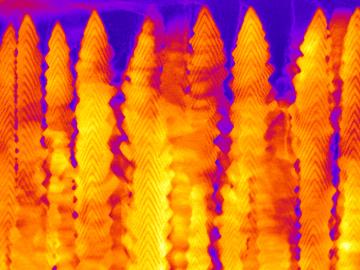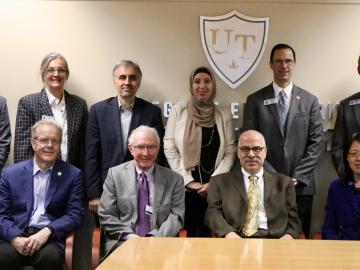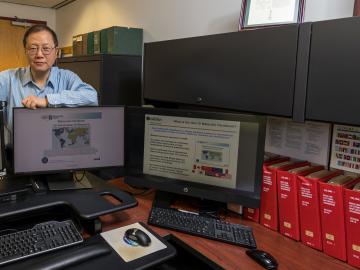
Filter News
Area of Research
- (-) Fusion and Fission (29)
- (-) Materials (56)
- Advanced Manufacturing (6)
- Biology and Environment (31)
- Building Technologies (1)
- Computational Biology (1)
- Computational Engineering (3)
- Computer Science (15)
- Electricity and Smart Grid (3)
- Energy Science (84)
- Fuel Cycle Science and Technology (1)
- Functional Materials for Energy (1)
- Fusion Energy (11)
- Isotope Development and Production (1)
- Isotopes (4)
- Materials for Computing (10)
- Mathematics (1)
- National Security (28)
- Neutron Science (22)
- Nuclear Science and Technology (37)
- Nuclear Systems Modeling, Simulation and Validation (1)
- Quantum information Science (9)
- Sensors and Controls (1)
- Supercomputing (134)
News Topics
- (-) Composites (9)
- (-) Computer Science (19)
- (-) Frontier (4)
- (-) Grid (6)
- (-) Nuclear Energy (42)
- (-) Quantum Science (11)
- 3-D Printing/Advanced Manufacturing (26)
- Advanced Reactors (10)
- Artificial Intelligence (10)
- Big Data (2)
- Bioenergy (11)
- Biology (5)
- Biomedical (8)
- Buildings (5)
- Chemical Sciences (34)
- Clean Water (3)
- Coronavirus (4)
- Critical Materials (13)
- Cybersecurity (4)
- Education (1)
- Energy Storage (35)
- Environment (17)
- Exascale Computing (3)
- Fossil Energy (1)
- Fusion (27)
- High-Performance Computing (6)
- Irradiation (1)
- Isotopes (14)
- ITER (6)
- Machine Learning (5)
- Materials (74)
- Materials Science (80)
- Mathematics (1)
- Microscopy (27)
- Molten Salt (3)
- Nanotechnology (39)
- National Security (3)
- Neutron Science (34)
- Partnerships (13)
- Physics (29)
- Polymers (17)
- Quantum Computing (3)
- Security (4)
- Simulation (4)
- Space Exploration (3)
- Summit (2)
- Transportation (16)
Media Contacts

A team led by the Department of Energy’s Oak Ridge National Laboratory synthesized a tiny structure with high surface area and discovered how its unique architecture drives ions across interfaces to transport energy or information.

Scientists at the Department of Energy Manufacturing Demonstration Facility at ORNL have their eyes on the prize: the Transformational Challenge Reactor, or TCR, a microreactor built using 3D printing and other new approaches that will be up and running by 2023.

In the race to identify solutions to the COVID-19 pandemic, researchers at the Department of Energy’s Oak Ridge National Laboratory are joining the fight by applying expertise in computational science, advanced manufacturing, data science and neutron science.

An international team of researchers has discovered the hydrogen atoms in a metal hydride material are much more tightly spaced than had been predicted for decades — a feature that could possibly facilitate superconductivity at or near room temperature and pressure.

Scientists at have experimentally demonstrated a novel cryogenic, or low temperature, memory cell circuit design based on coupled arrays of Josephson junctions, a technology that may be faster and more energy efficient than existing memory devices.

Researchers at ORNL have developed a quantum chemistry simulation benchmark to evaluate the performance of quantum devices and guide the development of applications for future quantum computers.

Students often participate in internships and receive formal training in their chosen career fields during college, but some pursue professional development opportunities even earlier.

Researchers at the Department of Energy’s Oak Ridge National Laboratory have received five 2019 R&D 100 Awards, increasing the lab’s total to 221 since the award’s inception in 1963.

ORNL and The University of Toledo have entered into a memorandum of understanding for collaborative research.

Six new nuclear reactor technologies are set to deploy for commercial use between 2030 and 2040. Called Generation IV nuclear reactors, they will operate with improved performance at dramatically higher temperatures than today’s reactors.


